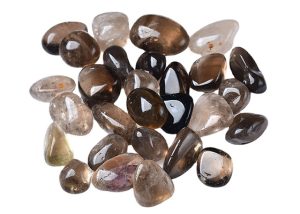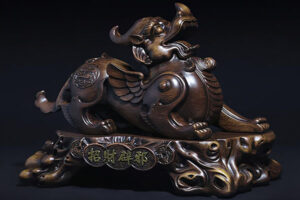
Amazonite is a beautiful gemstone that has been used for centuries in jewelry-making, sculptures, and other decorative objects. With its striking shades of green and white, amazonite can make a great addition to any collection. However, it’s important to be able to identify real amazonite from imitations, especially if you’re a collector or buyer. In this post, we’ll look at some of the characteristics of real amazonite and how to tell if it’s genuine or not.
What is Amazonite?
Amazonite is a variety of microcline, which is a type of feldspar mineral. It’s a relatively soft stone, with a hardness of 6 to 6.5 on the Mohs scale. Amazonite is found in many parts of the world, including Russia, Brazil, Madagascar, and the United States. It’s most commonly known for its beautiful green color, which is caused by the presence of small amounts of lead and copper in the mineral.
Amazonite has been used for centuries in jewelry-making and decorative arts. The ancient Egyptians, for example, used amazonite to make amulets and other objects. The stone was also highly valued by the ancient Greeks, who believed it had the power to protect against negative energy and bring luck and prosperity.
Characteristics of Real Amazonite
To identify real amazonite, it’s important to look at its physical characteristics. Here are some of the key features to look for:
Color
Real amazonite has a range of green colors, from pale green to a deeper green-blue color. It often has white streaks or veins running through it, which are known as schiller or iridescence. If the stone is too dark or too uniform in color, it’s likely to be an imitation.
Luster
Amazonite has a vitreous (glassy) to pearly luster, which means it reflects light well. If the stone is dull or lacks shine, it may not be genuine.
Hardness
Amazonite has a hardness of 6 to 6.5 on the Mohs scale, which means it’s relatively soft. If the stone is too hard or too soft, it’s unlikely to be real.
Specific Gravity
Amazonite has a specific gravity of 2.56 to 2.58, which means it’s relatively dense. To check the specific gravity, you can use a simple test called a hydrostatic test. Fill a container with water, then place the stone in it. If the stone sinks, it’s likely to be genuine.
Other Identifying Features
Amazonite has a distinctive cleavage pattern, which means it breaks along certain planes. It also has a conchoidal fracture, which means it breaks with a smooth, curved surface. These features can help identify real amazonite from imitations.
How to Tell If Amazonite is Real
To tell if amazonite is real, you can perform a few simple tests:
Visual Inspection
Examine the stone closely with a magnifying glass or loupe. Look for the features described above, such as the color, luster, and cleavage pattern. If the stone has a uniform color or lacks the characteristic features of amazonite, it’s probably not genuine.
Scratch Test
Perform a scratch test by rubbing the stone against a piece of unglazed porcelain. If the stone leaves a white streak, it’s likely to be genuine. If it leaves a colored streak or doesn’t leave a streak at all, it may be an imitation.
Specific Gravity Test
Perform a hydrostatic test to check the specific gravity of the stone. Fill a container with water, then place the stone in it. If the stone sinks, it’s likely to be real amazonite, since it has a relatively high specific gravity.
Seek Professional Help
If you’re still unsure whether your amazonite is real, you can take it to a professional gemologist or jeweler. They have specialized equipment and expertise to help identify the stone.
Common Amazonite Imitations
Unfortunately, there are many imitations of amazonite on the market. Here are some of the most common ones to watch out for:
Glass
Some sellers may try to pass off green-tinted glass as amazonite. Glass imitations are usually uniform in color and lack the characteristic features of real amazonite.
Dyed Green Feldspar
Feldspar is a mineral that’s similar to amazonite in composition. Some sellers may dye feldspar green and sell it as amazonite. This type of imitation is often easy to spot, since the color is usually too uniform and lacks the characteristic features of real amazonite.
Aventurine
Aventurine is a type of quartz that’s often green in color. It can look similar to amazonite, but it lacks the distinctive white streaks and cleavage pattern of real amazonite.
Serpentine
Serpentine is a mineral that’s often green in color and can be mistaken for amazonite. However, it’s much softer than amazonite and lacks the characteristic features of the real stone.
Conclusion
Identifying real amazonite can be challenging, but it’s an important skill for collectors and buyers. By looking at the stone’s color, luster, hardness, specific gravity, and other characteristics, you can get a good sense of whether it’s genuine or not. If you’re still unsure, it’s always a good idea to seek professional help. By being cautious and informed, you can ensure that you’re getting a genuine amazonite stone that will be a valuable addition to your collection or jewelry.




